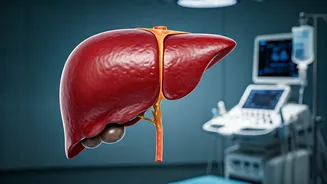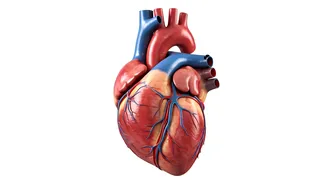Understanding Fatty Liver
Fatty liver disease is a condition where excess fat accumulates in the liver. It's becoming increasingly common, linked to factors like obesity, diabetes,
and unhealthy eating habits. There are two main types: non-alcoholic fatty liver disease (NAFLD), not related to alcohol, and alcoholic fatty liver disease (AFLD), caused by excessive alcohol intake. The build-up of fat can lead to inflammation and, if left unchecked, can progress to more serious conditions like cirrhosis or liver failure. It is important to understand that the liver has several crucial functions. It filters toxins, produces bile for digestion, and stores energy. Protecting and supporting its health is vital for overall well-being. Regular exercise is one way to achieve this, along with a balanced diet and other healthy habits.
Cardio for Liver Health
Cardiovascular exercises, often called cardio, play a vital role in managing fatty liver. Activities like brisk walking, running, cycling, or swimming help burn calories and reduce overall body fat, which in turn reduces fat in the liver. Aim for at least 150 minutes of moderate-intensity cardio each week, or 75 minutes of vigorous-intensity exercise. This helps improve insulin sensitivity, a key factor in NAFLD. Cardio also enhances blood circulation and boosts metabolism, further supporting liver function. Start slowly and gradually increase the intensity and duration as fitness improves. Consistency is important, so choose activities you enjoy and can maintain over the long term. Remember to consult a doctor before beginning any new exercise regimen, especially if you have existing health conditions.
Strength Training Benefits
Strength training, which involves using weights or resistance to build muscle, offers significant benefits for people with fatty liver. Weight training helps increase muscle mass, which boosts metabolism and aids in burning more calories, even at rest. Building muscle also improves insulin sensitivity, making it easier for the body to process glucose and reduce fat storage in the liver. Incorporate strength training sessions two to three times a week, focusing on major muscle groups. Examples of such exercises include squats, deadlifts, push-ups, and rows. Use a weight that challenges you, aiming for 8-12 repetitions per set. As you get stronger, gradually increase the weight. Combining strength training with cardio is a highly effective approach to liver health.
Yoga and Liver Support
Yoga offers a holistic approach to managing fatty liver disease. Many yoga poses improve digestion, reduce stress, and enhance blood flow to the liver. Certain yoga styles, like Hatha or Vinyasa, involve holding poses and flowing through movements that benefit both the body and mind. Regular yoga practice can help reduce overall body fat, control blood sugar levels, and alleviate stress. Stress reduction is crucial, as chronic stress can worsen liver inflammation. Incorporate yoga into your routine 2-3 times per week, focusing on poses that stimulate the abdominal organs, such as twists and forward bends. Remember to practice mindfully, paying attention to your breath and body alignment. Yoga provides a gentle yet effective way to support liver health and overall well-being.
Interval Training Approach
High-Intensity Interval Training (HIIT) is another effective way to combat fatty liver. HIIT involves short bursts of intense exercise followed by brief recovery periods. This type of training is highly efficient, burning a lot of calories in a short amount of time and improving cardiovascular fitness. HIIT boosts metabolism and helps reduce both visceral fat (fat stored around the organs) and subcutaneous fat. It improves insulin sensitivity and supports overall metabolic health. An example of a HIIT workout might include alternating between 30 seconds of high-intensity activity, like sprinting or jumping jacks, and 30 seconds of rest. Repeat this cycle for 15-20 minutes. HIIT can be adapted to various activities, making it versatile for different fitness levels. Always consult your doctor before starting HIIT to ensure it's safe for you, especially if you have existing health conditions.











